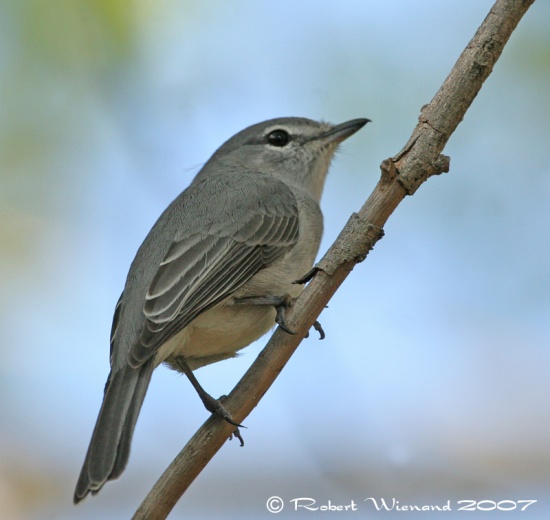(Edit by Morph deleted.) |
|||
| Line 23: | Line 23: | ||
* ''M. c. caerulescens'' | * ''M. c. caerulescens'' | ||
:*Extreme southern [[Mozambique]], southern [[Swaziland]] and south-eastern [[South Africa]] | :*Extreme southern [[Mozambique]], southern [[Swaziland]] and south-eastern [[South Africa]] | ||
| − | + | [[Image:176_Ashy_Flycatcher_MM.JPG|thumb|550px|right|Muscicapa caerulescens <br />Photo by {{user|Morph|Morph}}<br />Taken in the grounds of Keekorok Lodge, Maasai Mara, Kenya. Aug 2007.]] | |
==Habitat== | ==Habitat== | ||
Dry and moist forests (where it prefers forest edge and clearings) and moist savanna. | Dry and moist forests (where it prefers forest edge and clearings) and moist savanna. | ||
Revision as of 17:04, 25 October 2009
Alternative name: Ashy Alseonax
- Muscicapa caerulescens
Identification
14-16 cm. This is a pale grey or blue-grey flycatcher of forest margins. The black loral line and the short white supraloral streak which joins the narrow white eye-ring are good diagnostic features for this bird.
Distribution
Sub-Saharan Africa: Guinea to south-eastern Somalia, Angola and eastern South Africa.
Taxonomy
There are 6 subspecies:2
- M. c. nigrorum
- South-eastern Guinea to Sierra Leone, Ghana and Togo
- M. c. brevicauda
- M. c. cinereola
- M. c. impavida
- M. c. vulturna
- Southern Malawi to southern Zimbabwe and north-eastern South Africa
- M. c. caerulescens
- Extreme southern Mozambique, southern Swaziland and south-eastern South Africa

Photo by Morph
Taken in the grounds of Keekorok Lodge, Maasai Mara, Kenya. Aug 2007.
Habitat
Dry and moist forests (where it prefers forest edge and clearings) and moist savanna.
Behaviour
The diet comprises mainly insects; hawked or taken on the ground. Also seen eating small fruit and small geckos.
Breeding
Monogamous and territorial. Both sexes build a cup-shaped nest using bark, grass, moss and rootlets (sometimes spiders web); it is placed in a shallow cavity in a tree or rock-face, or at a narrow fork between branches. Two to three cream, finely spotted eggs are laid and incubated for about 14 days. Parasitism by Klaas's Cuckoo has been recorded.
References
- Answers.com. 2008. Animal Encyclopedia: Ashy flycatcher. Downloaded 27 December 2008.
- Clements, JF. 2008. The Clements Checklist of Birds of the World. 6th ed., with updates to December 2008. Ithaca: Cornell Univ. Press. ISBN 978-0801445019. Spreadsheet available at http://www.birds.cornell.edu/clementschecklist.
- Hockey, PAR, WRJ Dean, and PG Ryan, eds. 2005. Roberts' Birds of Southern Africa. 7th ed. Cape Town: John Voelcker Bird Book Fund. ISBN 978-0620340533
- Sinclair, I and P Ryan. 2003. Birds of Africa South of the Sahara. Princeton: Princeton Univ. Press. ISBN 978-0691118154
Recommended Citation
- BirdForum Opus contributors. (2025) Ashy Flycatcher. In: BirdForum, the forum for wild birds and birding. Retrieved 2 January 2025 from https://www.birdforum.net/opus/Ashy_Flycatcher




